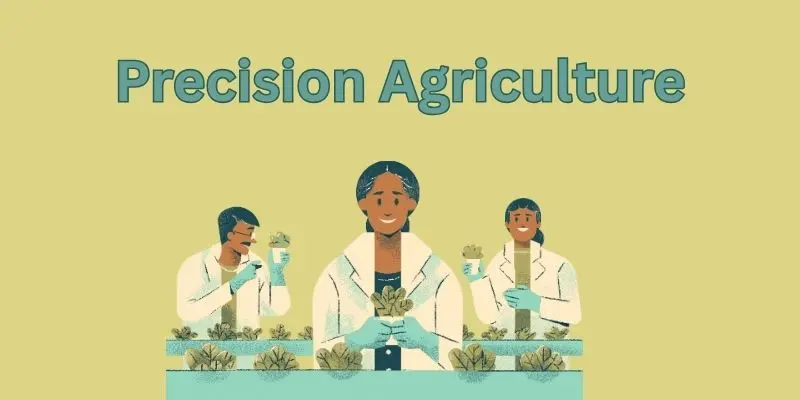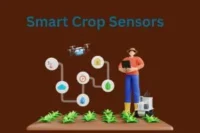Farming Using Technology. The New Age of Smart Agriculture
Published: 24 Jun 2025
You might wonder, “Can drones, apps, and robots really help with something as natural and traditional as farming?” For generations, farming has relied on hands-on work, weather patterns, and gut instinct. So how does a mobile app know when to water? How can sensors or AI tell us how our crops feel? If you’ve ever felt unsure about mixing machines with the soil, you’re not alone. But the truth is — smart farming isn’t about replacing the farmer. It’s about helping them farm better, safer, and smarter.
So, guys, without wasting time, let’s jump into the article to learn the Farming Using Technology: The New Age of Smart Agriculture
1. Technology Is Transforming Farming From Tradition to Innovation
- Farming used to rely solely on intuition, tradition, and manual labor.
- Today, farmers are embracing digital tools, artificial intelligence, IoT, and automation to make more accurate, efficient decisions.
- Technology brings precision, predictability, and peace of mind.
- Emotional Angle: Farmers no longer feel alone in the face of unpredictable weather, pests, or prices — technology stands beside them like a silent partner.
2. Precision Agriculture
- GPS and Geographic Information Systems (GIS) help farmers map their land and apply inputs precisely.
- Fertilizers and pesticides are applied only where needed, minimizing waste and environmental damage.
- Variable Rate Technology (VRT) adjusts seeding, watering, and spraying in real time.
- Result: Increased yields, reduced input costs, and maximum efficiency.
- Emotional Pull: Every seed and every rupee matters — no more guesswork, only growth.

3. Drones for Monitoring
- Drones capture aerial images that reveal crop health, pest outbreaks, weed growth, and soil conditions.
- Farmers can monitor hundreds of acres in minutes without walking through them.
- Thermal and multispectral imaging provides insights invisible to the naked eye.
- Benefit: Early detection = fast action = crop protection.
- Emotional Relief: Imagine spotting problems before they destroy your efforts — that’s the power of vision from above.
4. Smart Irrigation Systems
- AI and IoT-enabled drip systems use real-time soil moisture and weather data to water only when needed.
- Prevents both under-watering and over-watering — saves up to 50% water.
- Remote control and auto shut-off features reduce stress and manual labor.
- Emotional Impact: In water-scarce regions, this means more food with less water, and less worry with every drop.
5. Data-Driven Farming: From Instinct to Insight
- Farm management software collects data on soil health, weather forecasts, crop cycles, input usage, and market trends.
- AI tools suggest best practices based on years of data — when to sow, spray, fertilize, and harvest.
- Replaces “hope” with “clarity.”
- Emotional Power: Farming becomes a planned process, not a gamble. Farmers feel confident and in control.
6. Robotics & Automation
- Autonomous tractors, weeders, and harvesters perform tasks with precision, 24/7.
- Reduces human labor, especially during labor shortages or peak seasons.
- Robots eliminate human error and boost productivity.
- Emotional Comfort: You don’t have to break your back to grow — machines carry the weight, you lead the way.
7.Real-Time Farming in Your Hands
- Mobile apps offer weather alerts, fertilizer guides, pest control suggestions, and yield predictions.
- Many apps support local languages and offline features for rural use.
- Connects farmers with experts, markets, and government schemes instantly.
- Emotional Advantage: No more isolation — information is just a tap away.
8. Climate-Smart Farming
- AI and satellite systems track weather patterns and predict extreme events.
- Suggest drought-resistant seeds, crop rotation, and early warnings for floods or heatwaves.
- Helps farmers plan ahead and protect their crops from natural disasters.
- Emotional Assurance: Climate is changing, but with the right tech, you stay a step ahead.
9. Post-Harvest Technology
- IoT sensors track temperature, humidity, and pest levels in storage and transport.
- Reduces grain spoilage and ensures longer shelf life.
- Smart logistics platforms ensure farm produce reaches market on time and in fresh condition.
- Emotional Reward: Your harvest is valuable — and now, it reaches buyers safely and profitably.
Farming as a Smart Career Choice
- With technology, farming becomes a data-driven business — scalable, organized, and profitable.
- Youth see agriculture as innovative and entrepreneurial, not outdated.
- Digital platforms allow farmers to sell directly to markets or consumers, increasing profits.
- Emotional Transformation: Farming isn’t just about feeding others — it’s about rebuilding pride, prosperity, and purpose for farmers.
FAQs about Farming Using Technology: The New Age of Smart Agriculture
Here are some of the most frequently asked questions about the Farming Using Technology: The New Age of Smart Agriculture
No, not at all. Many tools like mobile apps, low-cost sensors, and solar-powered irrigation systems are designed for small and mid-sized farms too.
Yes, with the help of sensors and AI, modern farming tools can track soil moisture, plant health, and even pest risks — often better than the human eye can.
Not always. Many agricultural tools and apps now work offline or through SMS. Internet helps, but it’s not a must for every solution.
Drones used to be costly, but now basic agricultural drones are more affordable — and some services let you rent them when needed instead of buying.
In farming, GPS helps map fields, track machinery, and apply fertilizers or seeds precisely — saving money and improving crop results.
Yes, in some areas, autonomous machines now plant seeds, spray fields, and even harvest produce. They’re ideal for large-scale farms or labor-short areas.
Conclusion:
“Farming Using Technology: The New Age of Smart Agriculture” explores how modern tools like AI, drones, GPS mapping, smart irrigation, and mobile apps are transforming traditional agriculture. These technologies enable farmers to make data-driven decisions, reduce waste, increase yield, and adapt to climate change. From precision farming and robotics to real-time crop monitoring, each innovation helps improve efficiency and sustainability. Understanding these types of technologies is essential for farmers who want to stay competitive, reduce risk, and ensure long-term success in an ever-changing agricultural landscape.

- Be Respectful
- Stay Relevant
- Stay Positive
- True Feedback
- Encourage Discussion
- Avoid Spamming
- No Fake News
- Don't Copy-Paste
- No Personal Attacks

- Be Respectful
- Stay Relevant
- Stay Positive
- True Feedback
- Encourage Discussion
- Avoid Spamming
- No Fake News
- Don't Copy-Paste
- No Personal Attacks





